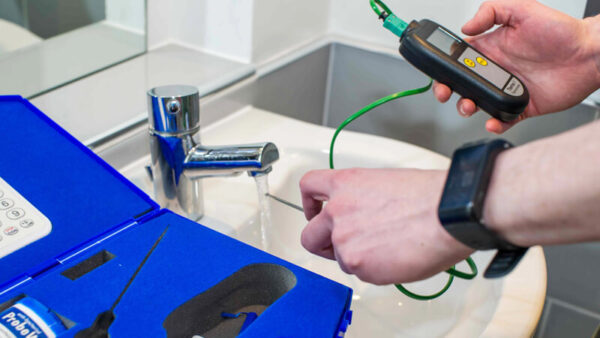A Legionnaires’ Risk Assessment service is a critical process designed to evaluate and manage the risk of Legionella bacteria growth in water systems, which can cause Legionnaires’ disease, a severe form of pneumonia. This service is essential for ensuring the safety and compliance of residential, commercial, and industrial buildings. Here’s an in-depth look at what this service entails:
Overview of Legionnaires’ Disease
Legionnaires’ disease is caused by inhaling water droplets contaminated with Legionella bacteria. These bacteria thrive in warm, stagnant water and can be found in various water systems, including cooling towers, hot tubs, showers, and plumbing systems. Due to the potential severity of the disease, conducting a thorough risk assessment is crucial.
Key Components of the Risk Assessment Service
- System Inspection and Mapping: The assessment begins with a detailed inspection of the water systems. Certified professionals map out the entire water network, including:
- Cold and Hot Water Systems: Storage tanks, pipes, heaters, and outlets.
- Cooling Towers and Evaporative Condensers: Often found in industrial and commercial buildings.
- Other Water Features: Fountains, hot tubs, and any other water-containing systems.
- Risk Identification: The inspectors identify areas where Legionella bacteria can potentially thrive. Key risk factors include:
- Water Temperature: Legionella proliferates in water temperatures between 20°C and 50°C.
- Stagnation: Stagnant water provides ideal conditions for bacterial growth.
- Biofilm Formation: Biofilms can harbor Legionella and protect them from disinfectants.
- Nutrient Sources: Organic material, rust, scale, and sediment in the water systems.
- Sampling and Testing: Water samples are taken from various points in the system and tested in a laboratory for the presence of Legionella bacteria. This helps in determining the extent of contamination and effectiveness of existing control measures.
- Risk Analysis and Documentation: After collecting data, a comprehensive risk analysis is performed. This includes:
- Assessment Report: Detailed documentation of findings, including potential risk areas and current control measures.
- Risk Level Classification: Assigning risk levels (low, medium, high) to different parts of the water system based on the likelihood of Legionella growth.
- Recommendations for Control Measures: The assessment service provides actionable recommendations to mitigate the identified risks. These may include:
- Temperature Control: Maintaining water temperatures either below 20°C or above 60°C to inhibit bacterial growth.
- Regular Flushing: Ensuring water systems are regularly flushed to prevent stagnation.
- Chemical Treatment: Using biocides or other chemical treatments to control bacterial growth.
- Physical Cleaning: Regular cleaning and descaling of tanks, pipes, and other equipment to remove biofilms and sediment.
- System Design Improvements: Modifying system design to eliminate dead legs and other areas of stagnation.
- Monitoring and Maintenance Plan: Establishing a long-term monitoring and maintenance plan is essential for ongoing Legionella control. This plan should include:
- Routine Inspections: Regularly scheduled inspections and water sampling.
- Record Keeping: Maintaining detailed records of all inspections, maintenance activities, and test results.
- Training: Ensuring that staff responsible for water system maintenance are adequately trained in Legionella control measures.
Benefits of Legionnaires’ Risk Assessment Service
- Health and Safety Compliance: Ensures compliance with health and safety regulations, reducing legal liabilities.
- Public Health Protection: Protects building occupants from the health risks associated with Legionnaires’ disease.
- Proactive Risk Management: Identifies and mitigates risks before they become serious problems.
- Peace of Mind: Provides building owners and managers with confidence that their water systems are safe and well-maintained.
Conclusion
A Legionnaires’ Risk Assessment service is vital for any facility with water systems that could potentially harbor Legionella bacteria. By thoroughly evaluating and mitigating the risks, this service helps prevent outbreaks of Legionnaires’ disease, ensuring the health and safety of building occupants and compliance with regulatory standards. Through regular monitoring, maintenance, and implementation of recommended control measures, the risk of Legionella proliferation can be effectively managed.

Reviews
There are no reviews yet.